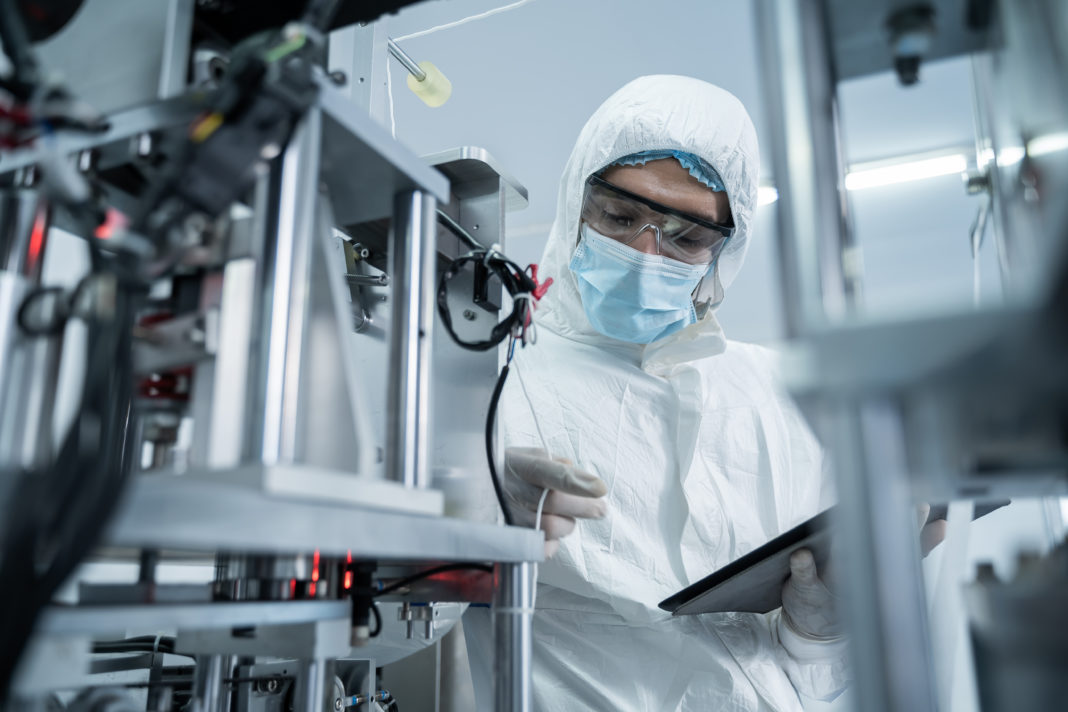Samsung Biologics, the South Korean contract development and manufacturing organization (CDMO), started building a biomanufacturing facility at the Incheon Free Economic Zone in November claiming it would be the largest and most innovative in the world. Automation will play a central role, according to CIO, James Choi, who says Samsung Biologics will use technologies and knowledge developed at its three existing facilities to manage manufacturing at the new plant.
“In automating our facilities, we utilize a Manufacturing Execution System (MES) at the beginning of each batch production to ensure that the materials are dispensed correctly and are accurately traced through the entire batch process, reducing the risk of operator error, and improving data accuracy with the automated weighing and dispensing process,” he says. “Our MES platform is also used to manage and log equipment usage and controlled procedures throughout the manufacturing process, thereby ensuring data integrity through electronic batch records. These will also be applied to our newest manufacturing facility, Plant 4, which is currently under construction.”
The core function of the MES is the management of batch production, which includes the creation of records and interaction with an IT system that collects, monitors, and analyzes process data.
Samsung is looking at expanding the approach, according to Choi, who points out that “our filling lines have full PAT capabilities, and we are exploring further automation incorporating AI machine learning for even greater efficiencies and quality assurance.”
Financial rationale
This willingness to embrace innovative manufacturing technologies is driven by a desire to satisfy customers, Choi says, pointing out that the CDMO sees the benefits of building capacity ahead of time.
“Digitalization by nature employs computerized systems that require up front investments, along with validation and end user training, but are almost without exception yield higher ROI, greater compliance, and quality compared to traditional processes,” he continues. “The benefits of applying innovation in the manufacturing space affords not only higher efficiency and quality through digitalization, but it also allows greater visibility into other business factors such as productivity and cost efficiencies. Having this insight allows us to manage our operations more optimally for our clients.”
The approach is an important part of Samsung’s efforts to attract customers.
“Employing advanced techniques and technologies enable us to provide services to prospective clients that require new approaches, for example, the use of perfusion technology during commercial bioproduction to reduce production time substantially,” Choi explains. “Other factors such as seamless end-to-end service and flexible scale-up capabilities are also increasingly important as customers look for partners that can comprehensively meet their needs while also saving time and money.”
The future
Samsung’s new facility—which is due to be operational in 2023—will make extensive use of perfusion bioreactor technologies for commercial production. Perfusion, the continuous feeding of fresh media and removal of spent media and product while retaining high numbers of viable cells, is well established at pilot scale.
In recent years, interest in using perfusion at large scale has increased, and Choi says Samsung’s investment in the technology reflects this demand.
“We’ve seen a lot of innovation across the biopharmaceutical sector in recent years but one of the most prominent developments for us has been the successful application of perfusion technology at a commercial scale,” he tells GEN. “Perfusion is gaining broader biopharmaceutical applications at a small scale with clinical development. However, few companies have reported utilization at a large scale for commercial applications to intensify bioprocessing and boost productivity.
“At Samsung Biologics we’ve already implemented large-scale N-1 perfusion allowing us to boost our clients’ clinical and commercial production capability ultimately reducing production time by up to 30%.”






